Abstract
Shared histocompatibility antigens between spouses may affect reproductive outcome adversely as a result of prenatal selection against compatible fetuses. Evidence from both animal and human studies suggest that histocompatible fetuses may not initiate a maternal immunologic response that prevents rejection of the embryo. Therefore, parents sharing HLA antigens may produce compatible fetuses and consequently experience a greater frequency of early fetal losses and show poorer reproductive outcome than couples not sharing antigens. In the Hutterites, an inbred human isolate that proscribes contraception, we tested the hypothesis that couples sharing HLA antigens have poorer reproductive outcomes than couples who do not. The Hutterites are characterized by high fertility and large family sizes. Couples that share zero (no. = 21), one (no. = 15), and more than one (no. = 10) HLA-A or HLA-B antigens were compared for reproductive performance. Median intervals between births were larger among couples that share more than one antigen in eight of 11 intervals examined. In addition, the median intervals from marriage to first, fifth, and tenth birth were consistently larger among couples that share more than one antigen. Differences among the groups appear to become larger with increasing parity, suggesting that the effect of histocompatibility on reproductive performance becomes more evident in later pregnancies. These differences in reproductive performance between couples that share zero, one, or more than one HLA-A or HLA-B antigens may have significant evolutionary consequences. However, our results demonstrate that sharing HLA antigens does not preclude normal pregnancy and caution should be exercised before concluding that shared HLA antigens are solely responsible for repeated fetal losses.
Full text
PDF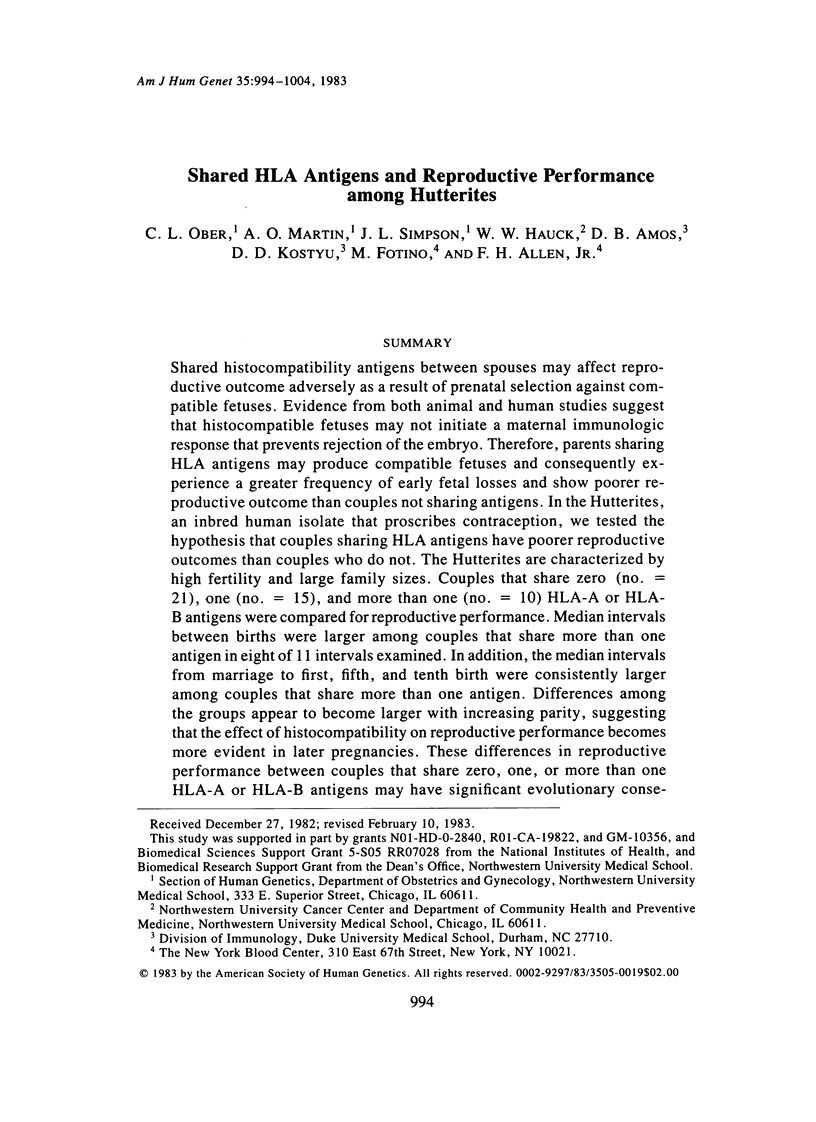
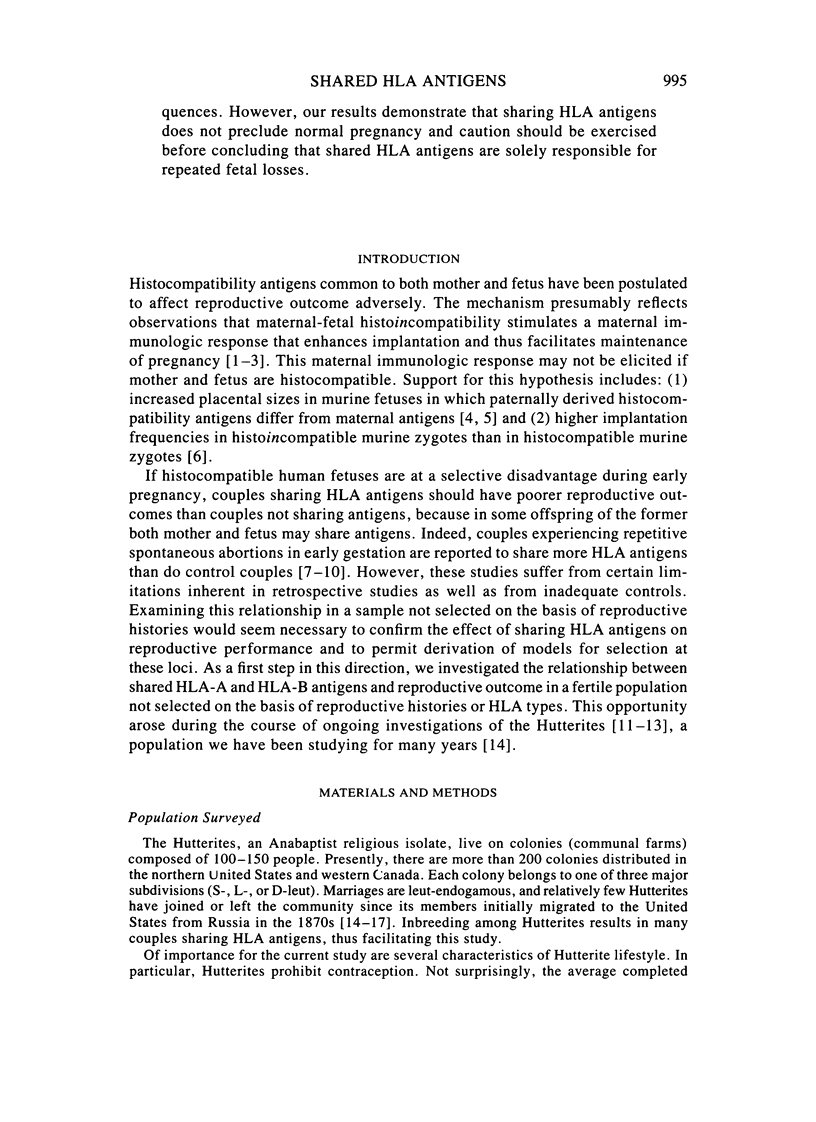
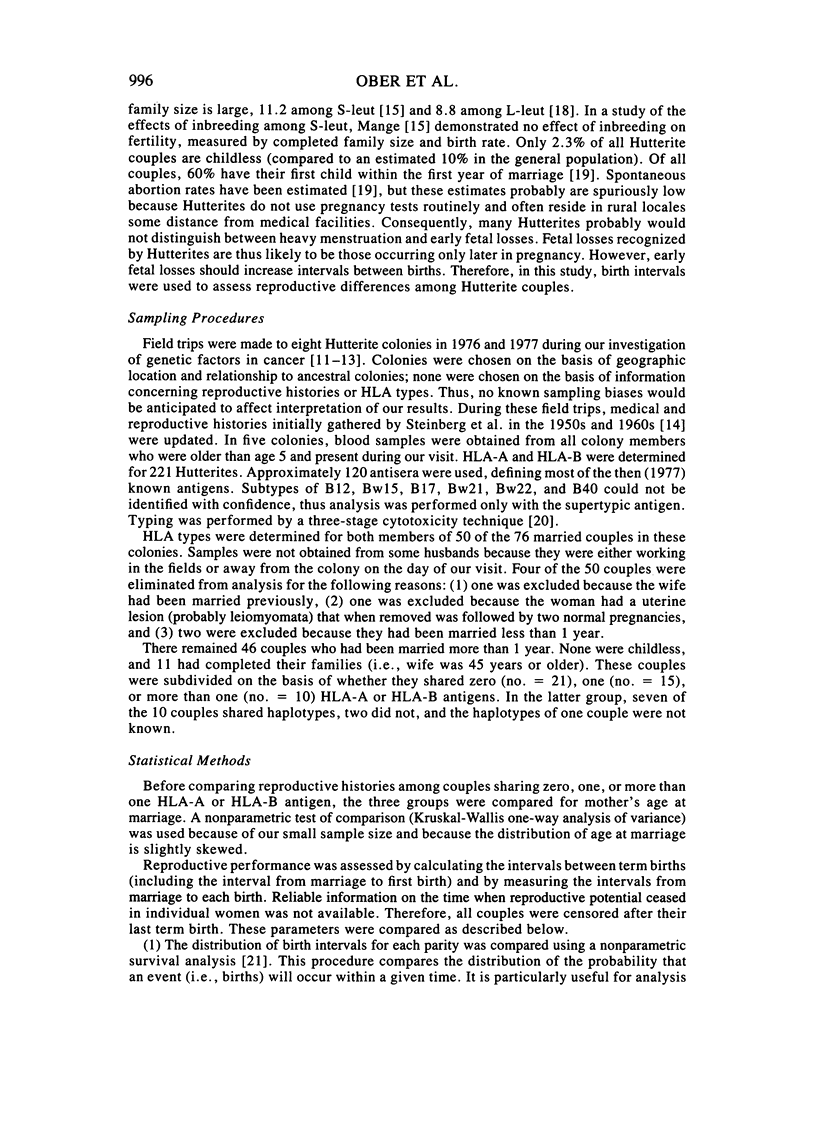
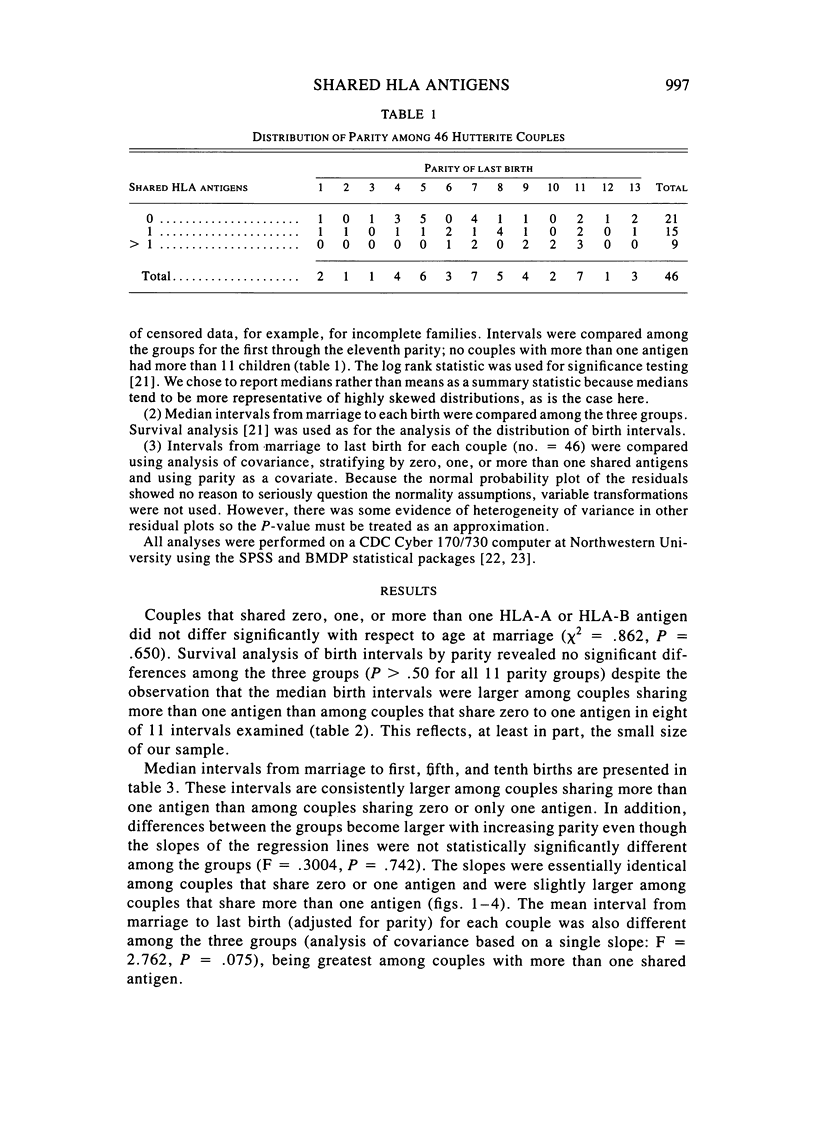
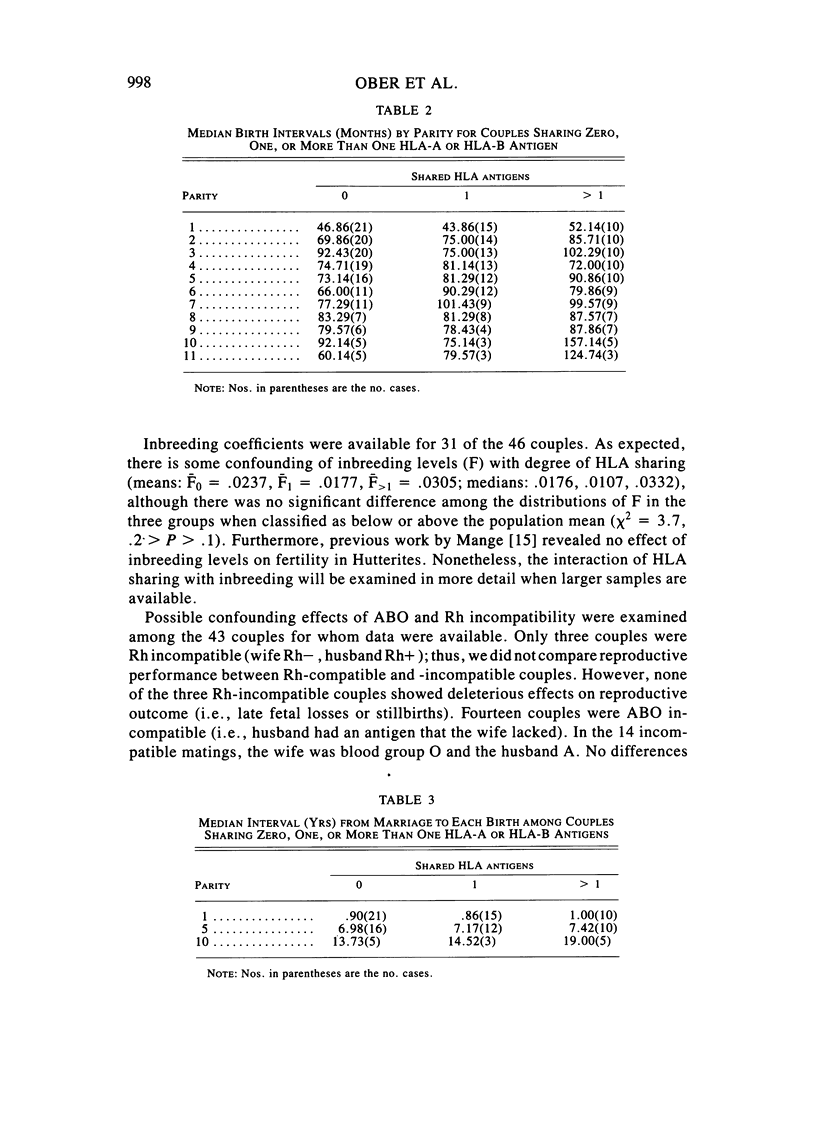
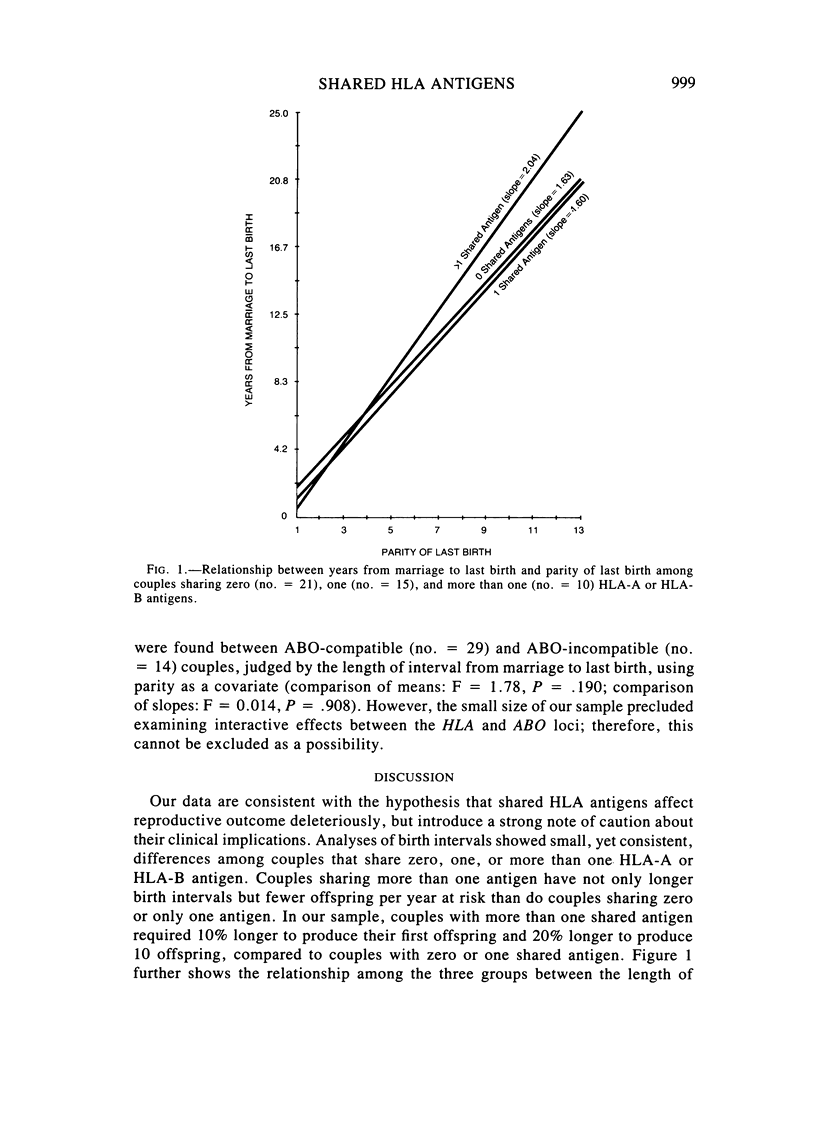
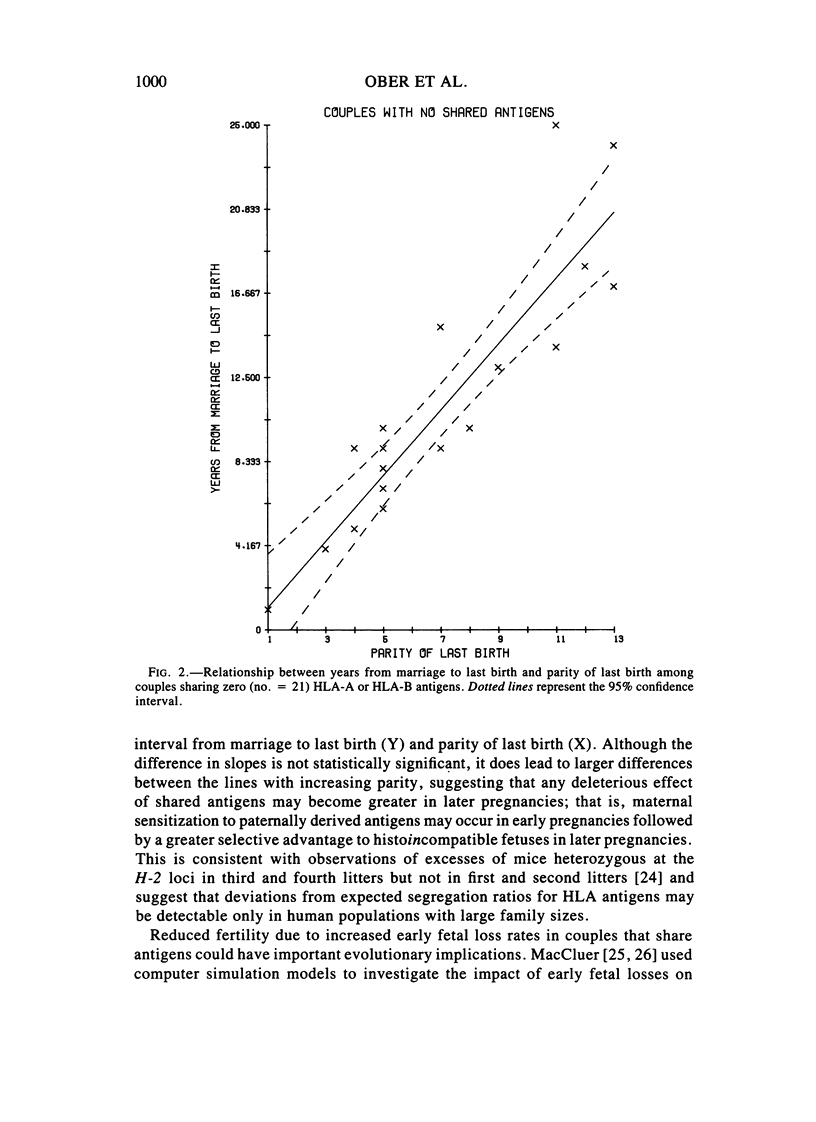
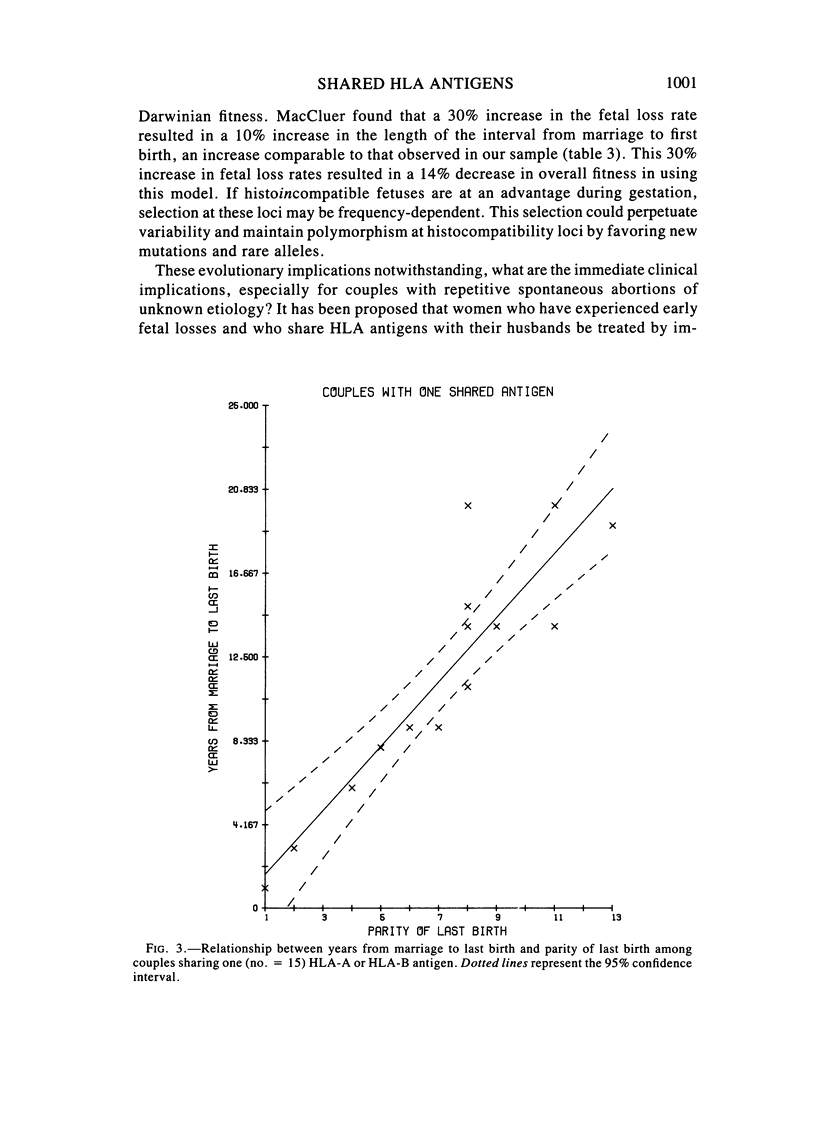
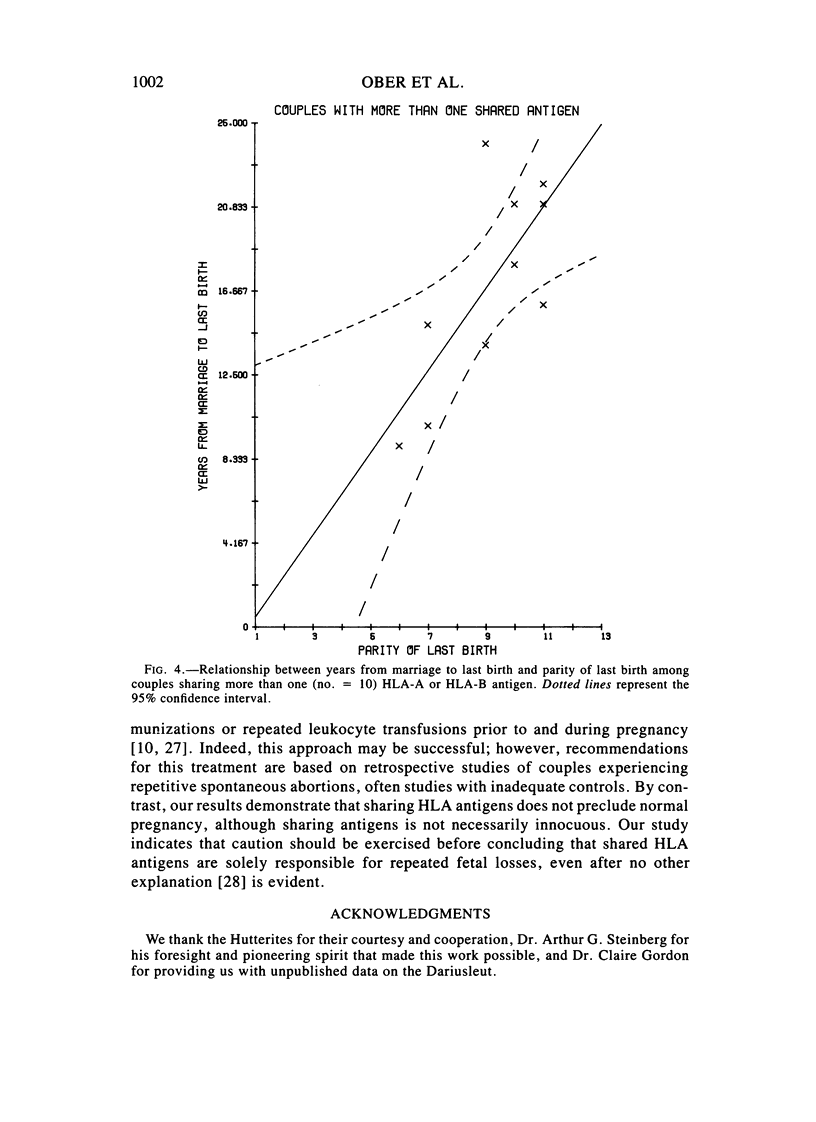
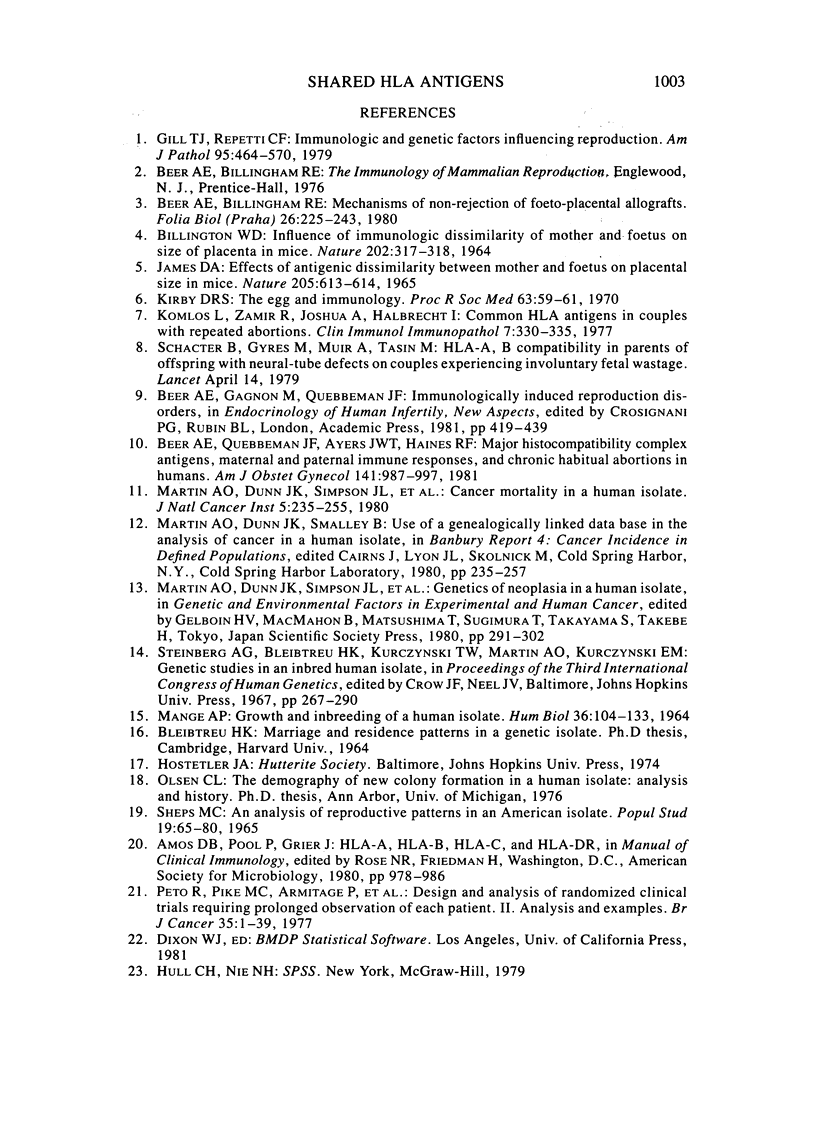
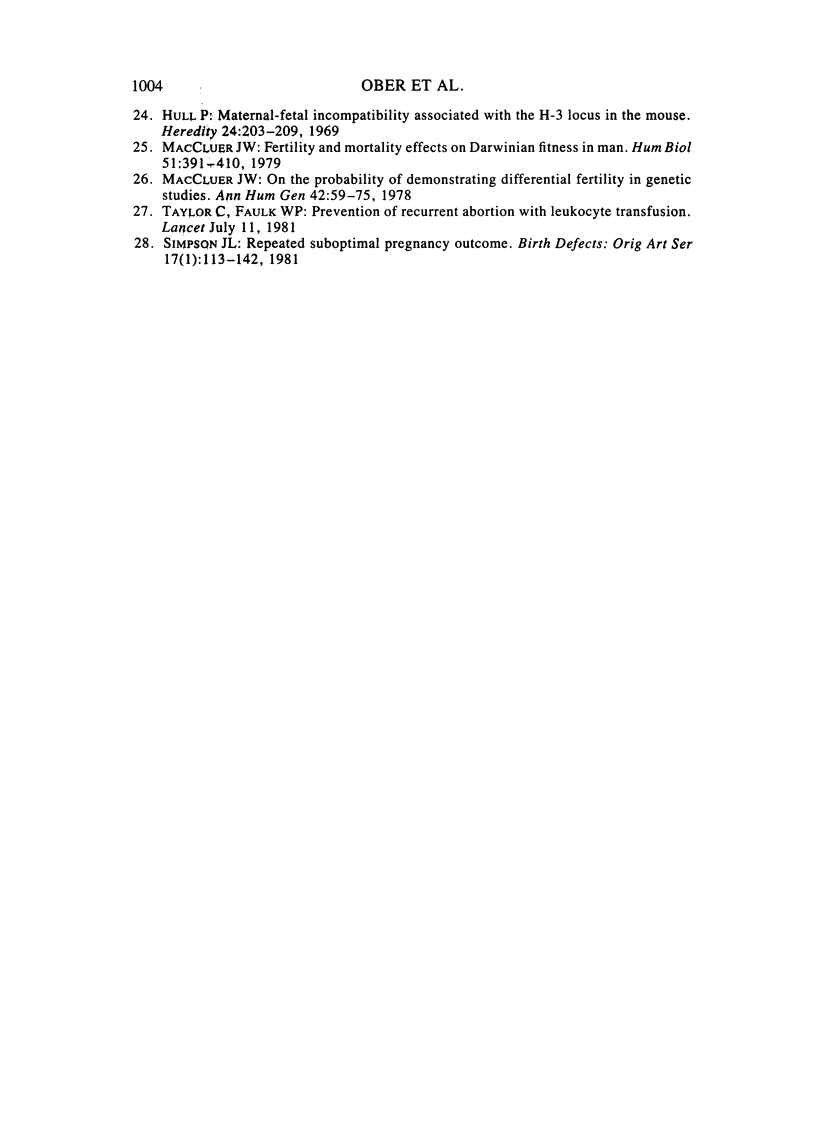
Selected References
These references are in PubMed. This may not be the complete list of references from this article.
- BILLINGTON W. D. INFLUENCE OF IMMUNOLOGICAL DISSIMILARITY OF MOTHER AND FOETUS ON SIZE OF PLACENTA IN MICE. Nature. 1964 Apr 18;202:317–318. doi: 10.1038/202317a0. [DOI] [PubMed] [Google Scholar]
- Beer A. E., Billingham R. E. Mechanisms of non-rejection of foeto-placental allografts. Folia Biol (Praha) 1980;26(4):225–243. [PubMed] [Google Scholar]
- Beer A. E., Quebbeman J. F., Ayers J. W., Haines R. F. Major histocompatibility complex antigens, maternal and paternal immune responses, and chronic habitual abortions in humans. Am J Obstet Gynecol. 1981 Dec 15;141(8):987–999. doi: 10.1016/s0002-9378(16)32690-4. [DOI] [PubMed] [Google Scholar]
- Gill T. J., 3rd, Repetti C. F. Immunologic and genetic factors influencing reproduction. A review. Am J Pathol. 1979 May;95(2):465–570. [PMC free article] [PubMed] [Google Scholar]
- Hull P. Maternal-foetal incompatibility associated with the H-3 locus in the mouse. Heredity (Edinb) 1969 May;24(2):203–209. doi: 10.1038/hdy.1969.26. [DOI] [PubMed] [Google Scholar]
- Kirby D. R. The egg and immunology. Proc R Soc Med. 1970 Jan;63(1):59–61. [PMC free article] [PubMed] [Google Scholar]
- Komlos L., Zamir R., Joshua H., Halbrecht I. Common HLA antigens in couples with repeated abortions. Clin Immunol Immunopathol. 1977 May;7(3):330–335. doi: 10.1016/0090-1229(77)90066-6. [DOI] [PubMed] [Google Scholar]
- MANGE A. P. GROWTH AND INBREEDING OF A HUMAN ISOLATE. Hum Biol. 1964 May;36:104–133. [PubMed] [Google Scholar]
- MacCluer J. W. On the probability of demonstrating differential fertility in genetic studies. Ann Hum Genet. 1978 Jul;42(1):59–75. doi: 10.1111/j.1469-1809.1978.tb00931.x. [DOI] [PubMed] [Google Scholar]
- Peto R., Pike M. C., Armitage P., Breslow N. E., Cox D. R., Howard S. V., Mantel N., McPherson K., Peto J., Smith P. G. Design and analysis of randomized clinical trials requiring prolonged observation of each patient. II. analysis and examples. Br J Cancer. 1977 Jan;35(1):1–39. doi: 10.1038/bjc.1977.1. [DOI] [PMC free article] [PubMed] [Google Scholar]


